LAND ****** GOLD****** RICHES
The people from the east were moving westward. They were looking for land - it was getting crowded in the east. They had heard there was gold in the hills - they wanted their share.
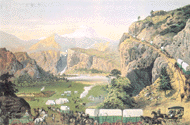
They came by wagon, stage, horse, some even walked pushing carts. But come they did. The Plains filled with people. There didn't seem to be enough room.
They moved ever westward, there seemed to be land for everyone and opportunities to make money everywhere.
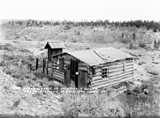
The Pony Express was started to get the mail through.
In 1860, a new company formed by the Kansas freighting firm of Russell, Majors, and Waddell began advertising for:
Young skinny, wiry fellows, not over 18.
Must be expert riders, willing to risk death daily.
Orphans preferred.
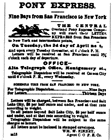
The Pony Express was a marvel of precision. The riders started at
St Joseph, Missouri in the east or Sacramento or San Francisco in the west , a rider would ride for a leg of the journey, about 75 miles, using three horses, then give the mail to the next rider. He would take the mail at that point back to his starting point. It took only about 15 days to go the complete route with the mail between Missouri and California. Unfortunately the Pony Express was closed in October 1861 with massive financial losses.
The army was called in to protect the settlers.
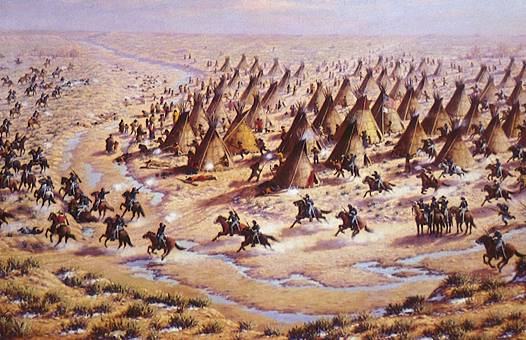
They moved those living on the Plains to new homes.
They destroyed the ponies. On the 8th and 9th of September 1858, Col George Wright directed the slaughter of horses belonging to the Spokane and Palouse Indians to bring the tribes to defeat.
1,000 ponies, the United States Cavalry stole 1,000 ponies
from the Spokane Indians, shot 1,000 ponies & only 1 survived,
shot 1,000 ponies & left them as monuments, left 1,000 ponies
falling into dust, fallen, shot 1,000 ponies & only 1 survived. …
The Indian was measured before
by the number of horses he owned,
the wealth of an Indian was determined
by the exact number of horses
he owned, …….. Sherman Alexie
HORSES
Old Shirts and New Skins
The Buffalo were slaughtered. There was little food and no hides for clothing or housing.
Elizabeth Custer:
" I have been on a train when the black moving mass of buffaloes before us looked as if it stretched on down to the horizon. Everyone went armed in those days, and …(it) was the greatest wonder that more people were not killed, as the wild rush for the windows, and the reckless discharge of rifles and pistols, put every passenger’s life in jeopardy… I could not for the life of me avoid a shudder when a long line of guns leaning on the backs of seats met my eye as I entered a car. When the sharp shrieks of the train whistle announced a herd of buffaloes the rifles were snatched, and in the struggle to twist around for a good aim out of the narrow window the barrel of the muzzle of the firearm passed dangerously near the ear of any scared woman who had the temerity to travel in those tempestuous days…
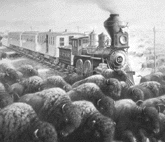
The last great buffalo herd was wiped out by soldiers and mercenairies on the Cannonball River in 1883. By 1892 less than one thousand buffalo could be found scattered in the whole country.
LIFE WAS SAD
NEXT
Sponsored by Yahoo!Geocities





